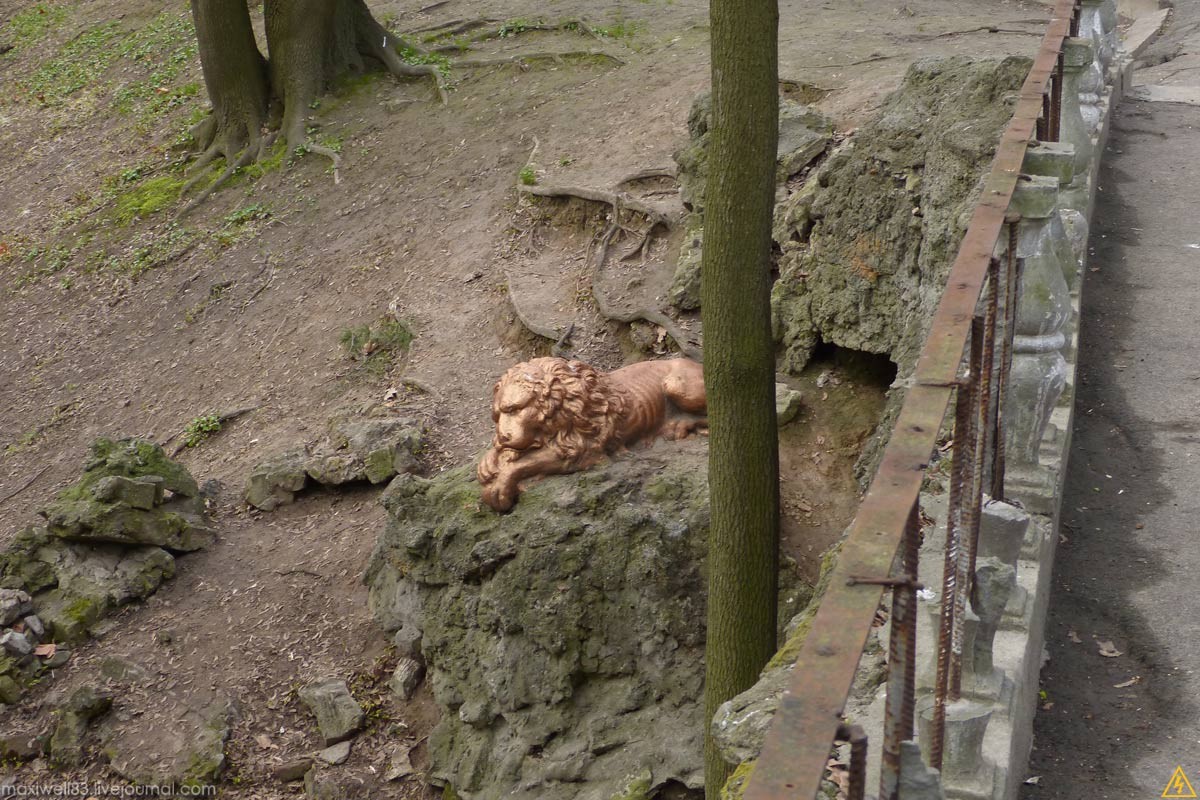There were several government dachas during the Soviet era, but the most famous of them, and those that have survived to this day, are located on Nivki and Lukyanovka. The popular name for special dachas is Khrushchev’s dacha, but Nikita Sergeevich has only minimal relation to state dachas, since he only lived there for some time.
Each of Khrushchev’s dachas included several buildings and formed a mini-complex, where there was a dining room, a house for staff accommodation, and so on. The first government dacha is located in Nivki Park. This area was previously known as Vasilchikovskaya Dacha, the history of which is associated with the name of the Kiev Governor-General Illarion Vasilchikov (lived 1805-1862, buried near the Near Caves in Kiev-Pechersk Lavra). Since the 18th century, there were the Khmelevshchina and Senkovshchina farms, which in 1859, by decree of Emperor Alexander II, became the property of Governor General Vasilchikov. The Vasilchikovskaya dacha was a vast area of 60 hectares of land with a forest, ponds, hayfields, a vegetable garden and an orchard. The general built a beautiful and comfortable two-story mansion in this picturesque area. After the death of her husband, his widow, Ekaterina Alekseevna, a famous Kiev philanthropist, donated the estate to the Holy Trinity Monastery on Menagerie, which she founded. The Vasilchikovskaya dacha remained in the possession of the monastery until the 1917 revolution, after which these lands were nationalized.
The new life of this area began in the 1930s, when the party authorities drew attention to it. The park next to the Syrets River was surrounded by a high fence, the general’s mansion was restored to accommodate the highest party leadership of the USSR. Another two-story building was also built for guests who from time to time came to the official living at the dacha. The area changed its unofficial names as owners changed, turning into the dacha of Lyubchenko, Kaganovich, Khrushchev, Korotchenko… The fence around the territory where the state dacha was located stood until the mid-1960s, after which the territory was transferred to the city, and the park itself was renamed in the “Park named after the XXII Congress of the CPSU” and opened for public visiting. The last resident of the government dacha was Demyan Korotchenko (one of the organizers of the partisan movement in Ukraine, which made a significant contribution to the defeat of fascism). In 1974, a monument to him was erected at the entrance to the park, and in 2015 it was unofficially dismantled (an act of vandalism on the night of May 26-27).
The guest house was bought by a SBU general in the 2000s, after which he began not only its restoration, but also its expansion. Apparently, problems arose either with finances or with permission for construction work, and in May 2015, unknown men dismantled supporting metal building structures, which caused the collapse of the second floor of the building.
The second government dacha was located in Lukyanovka and previously belonged to the pharmacist Oktavian Belsky. He built his first one-story house in 1893. Having saved up some money, he soon bought a neighboring plot and built a second house there, only this one was two-story. After the 1917 revolution, all the pharmacist’s property was nationalized and until the 1930s the territory remained publicly accessible, but not for long. Already in 1934-1937, the estate was inhabited by the People’s Commissar of Internal Affairs of the Ukrainian SSR Vsevolod Balitsky – a fence grew around the mansions, the park was closed to free access. After he was put on trial for some misdeeds, which sentenced him to death, the dacha with the surrounding territory was given over to a pioneer camp for children. After the liberation of Kyiv from the Germans, in 1943, Nikita Khrushchev moved to the estate. The last resident of the government dacha was Pyotr Shelest, who in April 1973 wrote an application for release from work due to retirement. In 1978, the administration of the Institute of Pediatrics, Obstetrics and Gynecology was located in the houses of the former state dacha. Like most government institutions, the institute does not have the funds to maintain the houses and grounds in good condition (not to mention restoration), so everything is in a very deplorable state.
Where is the government dacha on Nivki?
Pobeda Avenue, 82B
Where is the government dacha on Lukyanovka?
Gertsen street, 18









